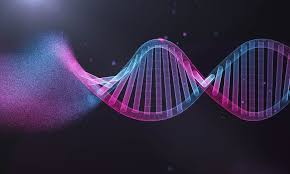
Breaking News
 GENIUS ACT TRIGGERED: The Biggest BANK RUN in History is COMING - Prepare NOW
GENIUS ACT TRIGGERED: The Biggest BANK RUN in History is COMING - Prepare NOW
 Food Banks All Over The U.S. Are Being Overwhelmed By A Tsunami Of Hungry People
Food Banks All Over The U.S. Are Being Overwhelmed By A Tsunami Of Hungry People
 Kids' Online Safety Laws Could Dig a Graveyard for Speech and Privacy
Kids' Online Safety Laws Could Dig a Graveyard for Speech and Privacy
Top Tech News
 Japan just injected artificial blood into a human. No blood type needed. No refrigeration.
Japan just injected artificial blood into a human. No blood type needed. No refrigeration.
 The 6 Best LLM Tools To Run Models Locally
The 6 Best LLM Tools To Run Models Locally
 Testing My First Sodium-Ion Solar Battery
Testing My First Sodium-Ion Solar Battery
 A man once paralyzed from the waist down now stands on his own, not with machines or wires,...
A man once paralyzed from the waist down now stands on his own, not with machines or wires,...
 Review: Thumb-sized thermal camera turns your phone into a smart tool
Review: Thumb-sized thermal camera turns your phone into a smart tool
 Army To Bring Nuclear Microreactors To Its Bases By 2028
Army To Bring Nuclear Microreactors To Its Bases By 2028
 Nissan Says It's On Track For Solid-State Batteries That Double EV Range By 2028
Nissan Says It's On Track For Solid-State Batteries That Double EV Range By 2028
 Carbon based computers that run on iron
Carbon based computers that run on iron
 Russia flies strategic cruise missile propelled by a nuclear engine
Russia flies strategic cruise missile propelled by a nuclear engine
 100% Free AC & Heat from SOLAR! Airspool Mini Split AC from Santan Solar | Unboxing & Install
100% Free AC & Heat from SOLAR! Airspool Mini Split AC from Santan Solar | Unboxing & Install
Autism is caused by mutations in 'supporting' DNA - not specific genes:

Since the human genome was first mapped in 2003, scientists have been searching for specific genes that cause autism.
But a new study by Princeton University and Flatiron Institute's Center for Computational Biology in New York City suggests we may have been barking up the wrong tree.
Researchers used artificial intelligence to screen the entire genomes of 1,790 families, each with just one person diagnosed with autism, to understand what genes and snippets of DNA could lead to the disorder in one but not in others.
They found that the disorder did not appear to be caused by mutation to a gene, but by little kinks in the 'junk' DNA that regulates and influences genes.
Until recently, 'regulatory DNA' has been seen as playing a minor supporting role in the human genomes' performance.
But the new study, published today, is the first to confirm a long-held theory that disruptions in any aspect of DNA can be the root of serious, complex disorders.

 "Refusal to Disclose"
"Refusal to Disclose"

